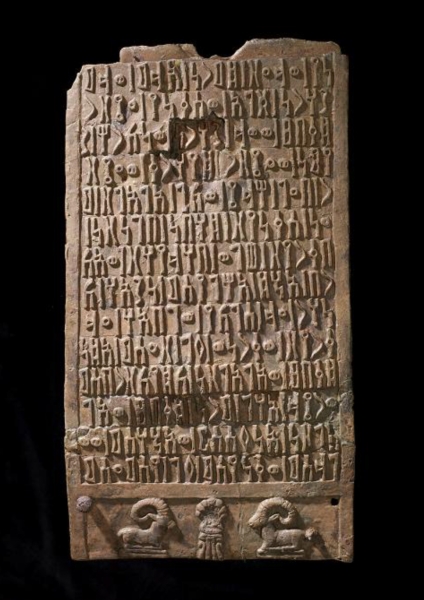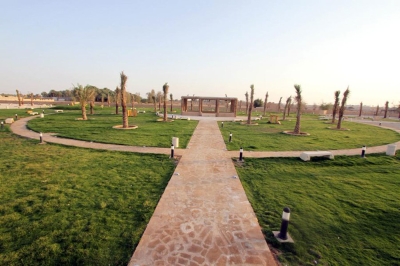

A Rectangular Copper Plate is a copper plate with inscriptions, rectangular in shape, discovered in archaeological Qaryat Al-Faw, one of the historical pre-Islamic civilization sites located in the southeastern part of Wadi ad-Dawasir Governorate in Riyadh Province, the Kingdom of Saudi Arabia.
Description of the plate
The plate is adorned with an inscription in Southern Musnad script, with its letters executed in relief carving and framed within a raised border. A broad strip at the bottom of the plate, also framed as an extension of the main border, features carvings of two mountain rams with large, backward-curving horns that arch forward. Between them, there is a raised relief resembling a human figure. The surface of the plate is divided into horizontal bands forming fourteen lines of well-crafted and clearly visible Southern Musnad script in relief.
Dimensions of the plate
Length: sixty-two cm.
Width: thirty-four cm.
Date of the plate
The plate dates back to between the third century BCE and the third century CE and was used for funerary purposes. It has been preserved at the Museum of the Department of Archaeology at King Saud University in Riyadh and is cataloged under the number 302 F 8. The plate was selected as part of a diverse collection of archaeological discoveries from Saudi Arabia for Saudi Archeological Masterpieces Through the Ages Exhibition, held at the Louvre Museum in the French capital, Paris, in 2010. The exhibition featured three hundred artifacts of various materials and periods, all original pieces from different Provinces of Saudi Arabia. These artifacts were classified into three historical categories: Prehistoric artifacts, pre-Islamic artifacts, and Islamic-era artifacts.
The discovery of this inscribed plate is among the outcomes of archaeological survey and excavation efforts carried out by the Saudi archaeological sector and museum authorities over the years. It is considered one of the findings of Saudi archaeologists and scientific missions.
Significance of the plate
Writing on metal plates represents a significant advancement in the art of writing, as its execution requires a high level of skill. The inhabitants of Qaryat Al-Faw were keen on documenting inscriptions and commemorative prayers, while the artist took care to embellish the lower section of the plate with depictions of ibexes.
Related quizzes
Related articles
